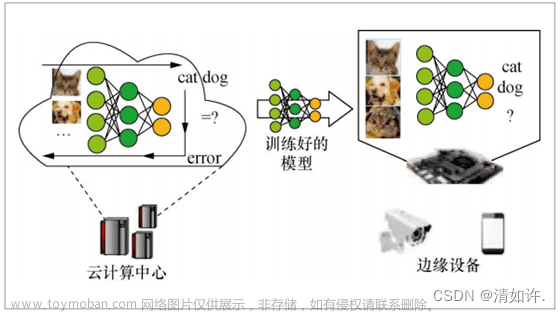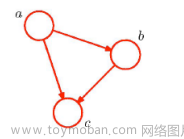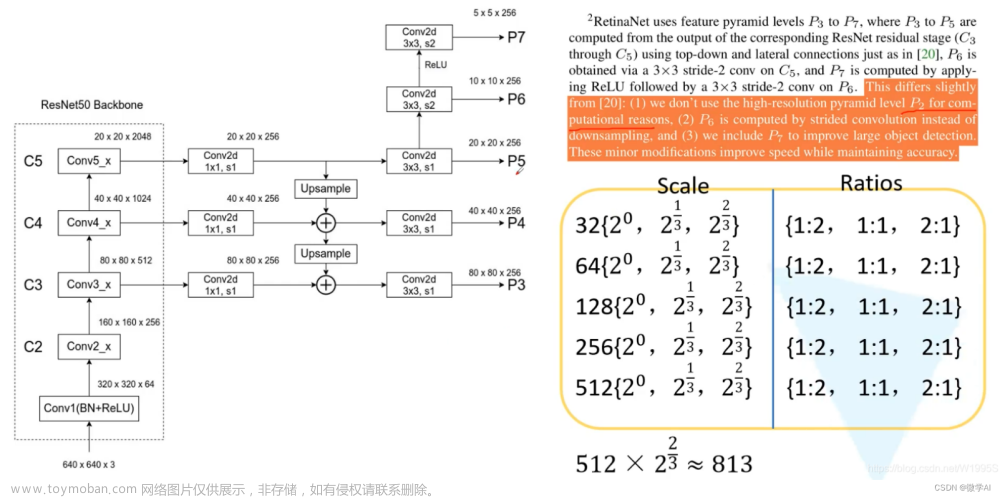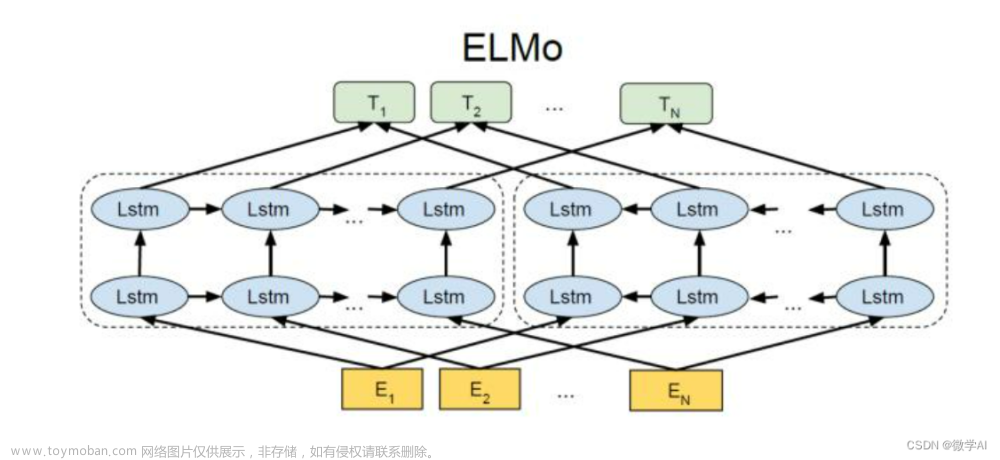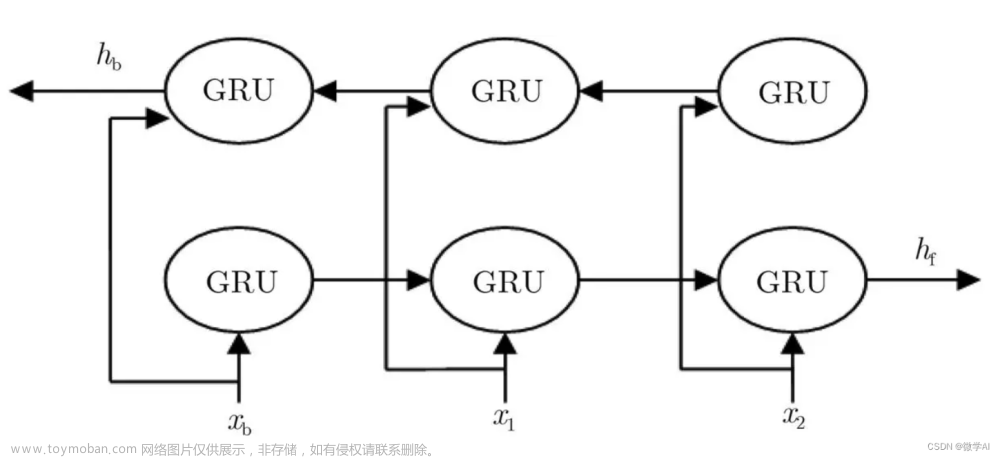一、目录
- kv_cache 用途
- 代码比较
- gpt2 多头自注意力实现+kv_cache
二、实现
- kv_cache 用途
1. kv_cache 应用于模型推理过程中,训练过程则不需要。
2. 为了避免生成式模型在推理过程中 每次都需要将先前生成的文本拼接到问题中,将生成的信息保存起来,推理过程进行加载即可。
3. 将先前的key,value 进行保存,而query 不需要。
参考:https://zhuanlan.zhihu.com/p/630832593
原理:query@key^T 目的是计算 当前i 位置时 各value 所占的比率(生成的各个词占的比例),所以计算当前i 位置的信息时,则query 中前i-1 位置的信息无用,因此可以丢掉。
4. 推理输出的token直接作为下一轮的输入,不再拼接,因为上文信息已经在 kvcache 中。 - 代码比较
推理时未保存past_key_value
import torch
from transformers import BertTokenizer, GPT2LMHeadModel,TextGenerationPipeline
model =GPT2LMHeadModel.from_pretrained("C:/Users/86188/Downloads/gpt2", torchscript=True).eval()
# tokenizer
tokenizer = BertTokenizer.from_pretrained("C:/Users/86188/Downloads/gpt2")
in_text = "白日依山尽"
in_tokens = torch.tensor(tokenizer.encode(in_text))
# inference
token_eos = torch.tensor([198]) # line break symbol
out_token = None
i = 0
with torch.no_grad():
while out_token != token_eos:
logits, _ = model(in_tokens)
out_token = torch.argmax(logits[-1, :], dim=0, keepdim=True)
in_tokens = torch.cat((in_tokens, out_token), 0)
text = tokenizer.decode(in_tokens)
print(f'step {i} input: {text}', flush=True)
i += 1
out_text = tokenizer.decode(in_tokens)
print(f' Input: {in_text}')
print(f'Output: {out_text}')
推理时保留past_key_value文章来源:https://www.toymoban.com/news/detail-817115.html
import torch
from transformers import BertTokenizer, GPT2LMHeadModel,TextGenerationPipeline
model =GPT2LMHeadModel.from_pretrained("C:/Users/86188/Downloads/gpt2", torchscript=True).eval()
# tokenizer
tokenizer = BertTokenizer.from_pretrained("C:/Users/86188/Downloads/gpt2")
in_text = "白日依山尽"
in_tokens = torch.tensor(tokenizer.encode(in_text))
# inference
token_eos = torch.tensor([198]) # line break symbol
out_token = None
kvcache = None
out_text = in_text
i = 0
with torch.no_grad():
while out_token != token_eos:
logits, kvcache = model(in_tokens, past_key_values=kvcache) # 增加了一个 past_key_values 的参数
out_token = torch.argmax(logits[-1, :], dim=0, keepdim=True)
in_tokens = out_token # 输出 token 直接作为下一轮的输入,不再拼接
text = tokenizer.decode(in_tokens)
print(f'step {i} input: {text}', flush=True)
i += 1
out_text += text
out_text = tokenizer.decode(in_tokens)
print(f' Input: {in_text}')
print(f'Output: {out_text}')
优点:减少计算量,提高推理速度。
底层实现:文章来源地址https://www.toymoban.com/news/detail-817115.html
query = self._split_heads(query, self.num_heads, self.head_dim)
key = self._split_heads(key, self.num_heads, self.head_dim)
value = self._split_heads(value, self.num_heads, self.head_dim)
if layer_past is not None:
past_key, past_value = layer_past
key = torch.cat((past_key, key), dim=-2) #past_key 拼接
value = torch.cat((past_value, value), dim=-2) #past_value 拼接
if use_cache is True:
present = (key, value)
else:
present = None
if self.reorder_and_upcast_attn:
attn_output, attn_weights = self._upcast_and_reordered_attn(query, key, value, attention_mask, head_mask)
else: #query [batch,n,1,d_dim] key,value=[batch,n,seq_len,d_dim]
attn_output, attn_weights = self._attn(query, key, value, attention_mask, head_mask)
- gpt2 自注意力实现
import torch
import torch.nn as nn
from typing import Optional,List,Tuple,Set,Union
from torch.cuda.amp import autocast
class Conv1D(nn.Module):
"""
1D-convolutional layer as defined by Radford et al. for OpenAI GPT (and also used in GPT-2).
Basically works like a linear layer but the weights are transposed.
Args:
nf (`int`): The number of output features.
nx (`int`): The number of input features.
"""
def __init__(self, nf, nx):
super().__init__()
self.nf = nf
self.weight = nn.Parameter(torch.empty(nx, nf))
self.bias = nn.Parameter(torch.zeros(nf))
nn.init.normal_(self.weight, std=0.02)
def forward(self, x):
size_out = x.size()[:-1] + (self.nf,)
x = torch.addmm(self.bias, x.view(-1, x.size(-1)), self.weight)
x = x.view(size_out)
return x
def prune_conv1d_layer(layer: Conv1D, index: torch.LongTensor, dim: int = 1) -> Conv1D:
"""
Prune a Conv1D layer to keep only entries in index. A Conv1D work as a Linear layer (see e.g. BERT) but the weights
are transposed.
Used to remove heads.
Args:
layer ([`~pytorch_utils.Conv1D`]): The layer to prune.
index (`torch.LongTensor`): The indices to keep in the layer.
dim (`int`, *optional*, defaults to 1): The dimension on which to keep the indices.
Returns:
[`~pytorch_utils.Conv1D`]: The pruned layer as a new layer with `requires_grad=True`.
"""
index = index.to(layer.weight.device)
W = layer.weight.index_select(dim, index).clone().detach()
if dim == 0:
b = layer.bias.clone().detach()
else:
b = layer.bias[index].clone().detach()
new_size = list(layer.weight.size())
new_size[dim] = len(index)
new_layer = Conv1D(new_size[1], new_size[0]).to(layer.weight.device)
new_layer.weight.requires_grad = False
new_layer.weight.copy_(W.contiguous())
new_layer.weight.requires_grad = True
new_layer.bias.requires_grad = False
new_layer.bias.copy_(b.contiguous())
new_layer.bias.requires_grad = True
return new_layer
def find_pruneable_heads_and_indices(
heads: List[int], n_heads: int, head_size: int, already_pruned_heads: Set[int]
) -> Tuple[Set[int], torch.LongTensor]:
"""
Finds the heads and their indices taking `already_pruned_heads` into account.
Args:
heads (`List[int]`): List of the indices of heads to prune.
n_heads (`int`): The number of heads in the model.
head_size (`int`): The size of each head.
already_pruned_heads (`Set[int]`): A set of already pruned heads.
Returns:
`Tuple[Set[int], torch.LongTensor]`: A tuple with the indices of heads to prune taking `already_pruned_heads`
into account and the indices of rows/columns to keep in the layer weight.
"""
mask = torch.ones(n_heads, head_size)
heads = set(heads) - already_pruned_heads # Convert to set and remove already pruned heads
for head in heads:
# Compute how many pruned heads are before the head and move the index accordingly
head = head - sum(1 if h < head else 0 for h in already_pruned_heads)
mask[head] = 0
mask = mask.view(-1).contiguous().eq(1)
index: torch.LongTensor = torch.arange(len(mask))[mask].long()
return heads, index
class GPT2Attention(nn.Module):
def __init__(self, config, is_cross_attention=False, layer_idx=None):
super().__init__()
max_positions = config.max_position_embeddings
self.register_buffer(
"bias",
torch.tril(torch.ones((max_positions, max_positions), dtype=torch.bool)).view(
1, 1, max_positions, max_positions
),
persistent=False,
)
self.register_buffer("masked_bias", torch.tensor(-1e4), persistent=False)
self.embed_dim = config.hidden_size
self.num_heads = config.num_attention_heads
self.head_dim = self.embed_dim // self.num_heads
self.split_size = self.embed_dim
if self.head_dim * self.num_heads != self.embed_dim:
raise ValueError(
f"`embed_dim` must be divisible by num_heads (got `embed_dim`: {self.embed_dim} and `num_heads`:"
f" {self.num_heads})."
)
self.scale_attn_weights = config.scale_attn_weights
self.is_cross_attention = is_cross_attention
# Layer-wise attention scaling, reordering, and upcasting
self.scale_attn_by_inverse_layer_idx = config.scale_attn_by_inverse_layer_idx
self.layer_idx = layer_idx
self.reorder_and_upcast_attn = config.reorder_and_upcast_attn
if self.is_cross_attention:
self.c_attn = Conv1D(2 * self.embed_dim, self.embed_dim)
self.q_attn = Conv1D(self.embed_dim, self.embed_dim)
else:
self.c_attn = Conv1D(3 * self.embed_dim, self.embed_dim)
self.c_proj = Conv1D(self.embed_dim, self.embed_dim)
self.attn_dropout = nn.Dropout(config.attn_pdrop)
self.resid_dropout = nn.Dropout(config.resid_pdrop)
self.pruned_heads = set()
def _attn(self, query, key, value, attention_mask=None, head_mask=None):
attn_weights = torch.matmul(query, key.transpose(-1, -2))
if self.scale_attn_weights:
attn_weights = attn_weights / torch.full(
[], value.size(-1) ** 0.5, dtype=attn_weights.dtype, device=attn_weights.device
)
# Layer-wise attention scaling
if self.scale_attn_by_inverse_layer_idx:
attn_weights = attn_weights / float(self.layer_idx + 1)
if not self.is_cross_attention:
# if only "normal" attention layer implements causal mask
query_length, key_length = query.size(-2), key.size(-2)
causal_mask = self.bias[:, :, key_length - query_length : key_length, :key_length]
mask_value = torch.finfo(attn_weights.dtype).min
# Need to be a tensor, otherwise we get error: `RuntimeError: expected scalar type float but found double`.
# Need to be on the same device, otherwise `RuntimeError: ..., x and y to be on the same device`
mask_value = torch.full([], mask_value, dtype=attn_weights.dtype).to(attn_weights.device)
attn_weights = torch.where(causal_mask, attn_weights.to(attn_weights.dtype), mask_value)
if attention_mask is not None:
# Apply the attention mask
attn_weights = attn_weights + attention_mask
attn_weights = nn.functional.softmax(attn_weights, dim=-1)
# Downcast (if necessary) back to V's dtype (if in mixed-precision) -- No-Op otherwise
attn_weights = attn_weights.type(value.dtype)
attn_weights = self.attn_dropout(attn_weights)
# Mask heads if we want to
if head_mask is not None:
attn_weights = attn_weights * head_mask
attn_output = torch.matmul(attn_weights, value)
return attn_output, attn_weights
def _upcast_and_reordered_attn(self, query, key, value, attention_mask=None, head_mask=None):
# Use `torch.baddbmm` (a bit more efficient w/ alpha param for scaling -- from Megatron-LM)
bsz, num_heads, q_seq_len, dk = query.size()
_, _, k_seq_len, _ = key.size()
# Preallocate attn_weights for `baddbmm`
attn_weights = torch.empty(bsz * num_heads, q_seq_len, k_seq_len, dtype=torch.float32, device=query.device)
# Compute Scale Factor
scale_factor = 1.0
if self.scale_attn_weights:
scale_factor /= float(value.size(-1)) ** 0.5
if self.scale_attn_by_inverse_layer_idx:
scale_factor /= float(self.layer_idx + 1)
# Upcast (turn off autocast) and reorder (Scale K by 1 / root(dk))
with autocast(enabled=False):
q, k = query.reshape(-1, q_seq_len, dk), key.transpose(-1, -2).reshape(-1, dk, k_seq_len)
attn_weights = torch.baddbmm(attn_weights, q.float(), k.float(), beta=0, alpha=scale_factor)
attn_weights = attn_weights.reshape(bsz, num_heads, q_seq_len, k_seq_len)
if not self.is_cross_attention:
# if only "normal" attention layer implements causal mask
query_length, key_length = query.size(-2), key.size(-2)
causal_mask = self.bias[:, :, key_length - query_length : key_length, :key_length]
mask_value = torch.finfo(attn_weights.dtype).min
# Need to be a tensor, otherwise we get error: `RuntimeError: expected scalar type float but found double`.
# Need to be on the same device, otherwise `RuntimeError: ..., x and y to be on the same device`
mask_value = torch.tensor(mask_value, dtype=attn_weights.dtype).to(attn_weights.device)
attn_weights = torch.where(causal_mask, attn_weights, mask_value)
if attention_mask is not None:
# Apply the attention mask
attn_weights = attn_weights + attention_mask
attn_weights = nn.functional.softmax(attn_weights, dim=-1)
# Downcast (if necessary) back to V's dtype (if in mixed-precision) -- No-Op if otherwise
if attn_weights.dtype != torch.float32:
raise RuntimeError("Error with upcasting, attn_weights does not have dtype torch.float32")
attn_weights = attn_weights.type(value.dtype)
attn_weights = self.attn_dropout(attn_weights)
# Mask heads if we want to
if head_mask is not None:
attn_weights = attn_weights * head_mask
attn_output = torch.matmul(attn_weights, value)
return attn_output, attn_weights
def _split_heads(self, tensor, num_heads, attn_head_size):
"""
Splits hidden_size dim into attn_head_size and num_heads
"""
new_shape = tensor.size()[:-1] + (num_heads, attn_head_size)
tensor = tensor.view(new_shape)
return tensor.permute(0, 2, 1, 3) # (batch, head, seq_length, head_features)
def _merge_heads(self, tensor, num_heads, attn_head_size):
"""
Merges attn_head_size dim and num_attn_heads dim into hidden_size
"""
tensor = tensor.permute(0, 2, 1, 3).contiguous()
new_shape = tensor.size()[:-2] + (num_heads * attn_head_size,)
return tensor.view(new_shape)
def forward(
self,
hidden_states: Optional[Tuple[torch.FloatTensor]],
layer_past: Optional[Tuple[torch.Tensor]] = None,
attention_mask: Optional[torch.FloatTensor] = None,
head_mask: Optional[torch.FloatTensor] = None,
encoder_hidden_states: Optional[torch.Tensor] = None,
encoder_attention_mask: Optional[torch.FloatTensor] = None,
use_cache: Optional[bool] = False,
output_attentions: Optional[bool] = False,
) -> Tuple[Union[torch.Tensor, Tuple[torch.Tensor]], ...]:
if encoder_hidden_states is not None:
if not hasattr(self, "q_attn"):
raise ValueError(
"If class is used as cross attention, the weights `q_attn` have to be defined. "
"Please make sure to instantiate class with `GPT2Attention(..., is_cross_attention=True)`."
)
query = self.q_attn(hidden_states)
key, value = self.c_attn(encoder_hidden_states).split(self.split_size, dim=2)
attention_mask = encoder_attention_mask
else:#[batch,seq_len,hidden]
query, key, value = self.c_attn(hidden_states).split(self.split_size, dim=2)
#[batch,h,seq_len,d_hiden]
query = self._split_heads(query, self.num_heads, self.head_dim)
key = self._split_heads(key, self.num_heads, self.head_dim)
value = self._split_heads(value, self.num_heads, self.head_dim)
if layer_past is not None:
past_key, past_value = layer_past
key = torch.cat((past_key, key), dim=-2)
value = torch.cat((past_value, value), dim=-2)
if use_cache is True:
present = (key, value)
else:
present = None
if self.reorder_and_upcast_attn:
attn_output, attn_weights = self._upcast_and_reordered_attn(query, key, value, attention_mask, head_mask)
else:
attn_output, attn_weights = self._attn(query, key, value, attention_mask, head_mask)
attn_output = self._merge_heads(attn_output, self.num_heads, self.head_dim)
attn_output = self.c_proj(attn_output)
attn_output = self.resid_dropout(attn_output)
outputs = (attn_output, present)
if output_attentions:
outputs += (attn_weights,)
return outputs # a, present, (attentions)
if __name__ == '__main__':
class Config:
max_position_embeddings=1024
hidden_size=768
num_attention_heads=12
scale_attn_weights=True
is_cross_attention=False
layer_idx=1
scale_attn_by_inverse_layer_idx=False
reorder_and_upcast_attn=False
attn_pdrop=0.1
resid_pdrop=0.1
config=Config()
hidden_states=torch.randn(size=(1,1,768))
key_past=torch.randn(size=(1,12,7,64))
value_past = torch.randn(size=(1, 12, 7, 64))
layer_past=[key_past,value_past]
attention=GPT2Attention(config)
attention(hidden_states,layer_past)
到了这里,关于大模型推理kv_cache缓存的文章就介绍完了。如果您还想了解更多内容,请在右上角搜索TOY模板网以前的文章或继续浏览下面的相关文章,希望大家以后多多支持TOY模板网!


